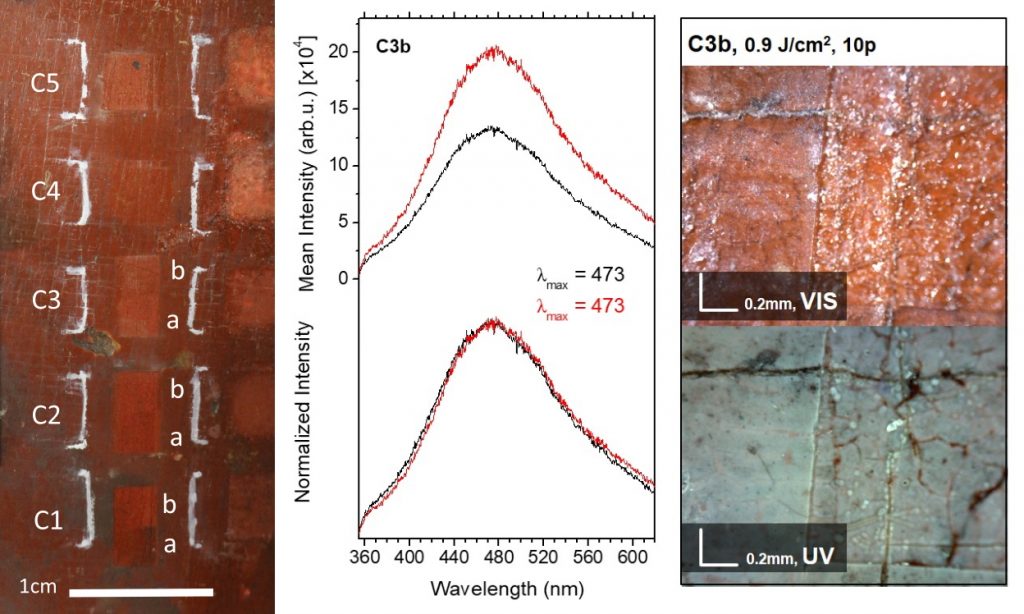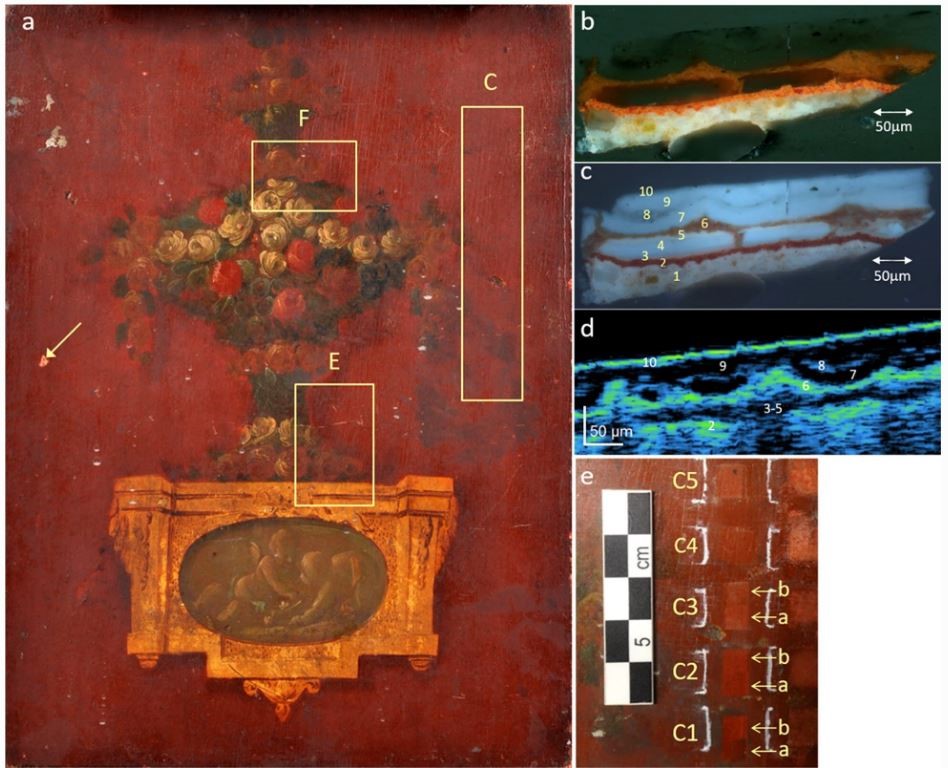IPERION-CH project: “Laser cleaning of paintings: in situ optimization …”
July 1, 2019
A new article has been recently published in “Heritage Science” presenting collaborative work of IESL-FORTH (Crete-Greece), CNR-ISTM (Perugia- Italy), Nicolaus Copernicus University (Torun-Poland), Cultural Heritage Agency of the Netherlands (Amsterdam-Netherlands).
The paper entitled “Laser cleaning of paintings: in situ optimization of operative parameters through non-invasive assessment by optical coherence tomography (OCT), reflection FT-IR spectroscopy and laser induced fluorescence spectroscopy (LIF)” by Patrizia Moretti, Magdalena Iwanicka, Kristalia Melesanaki, Eua Dim -Evdoxia Dimitroulaki, Olga Kokkinaki, Melissa Daugherty, Marcin Sylwestrzak, Paraskevi Pouli, Piotr Targowski, Klaas Jan van den Berg, Laura Cartechini and Costanza Miliani, reflects research performed in the framework of the H2020 EU project Iperion CH.

In this study the potential of the combined use of optical coherence tomography (OCT) and reflection FT-IR spectroscopy for in situ non-invasive assessment of laser cleaning procedures has been investigated on a historical easel painting donated to science. A systematic integration of the information on the chemical changes of the molecular composition of the painting surface provided by reflection FT-IR spectroscopy with the visualization of the stratigraphical changes by OCT allowed the evaluation of the sensitivity of the painting materials to different operative parameters of the laser treatment, such as laser fluence and number of pulses.
In parallel, laser induced fluorescence (LIF) spectroscopic measurements, recorded with the same laser beam at significantly attenuated energy density values, were exploited to provide information on the fluorescence properties of the irradiated varnish surfaces. The combination of the results obtained by OCT and FT-IR complemented with those from LIF measurements are discussed with the aim of developing an efficient methodology for assessing in situ the irradiated painting surfaces after the laser cleaning treatments and, thus, setting the basis for a future monitoring scheme that would ensure optimum cleaning interventions.
Further info:
https://heritagesciencejournal.springeropen.com/…/s40494-01…


